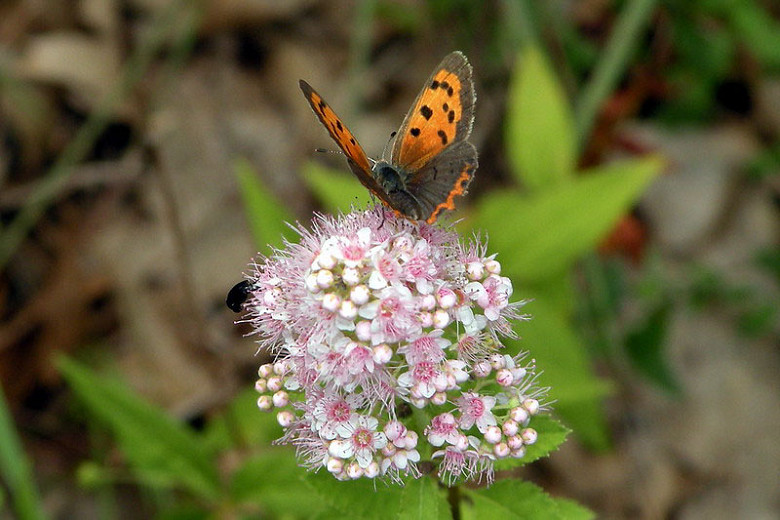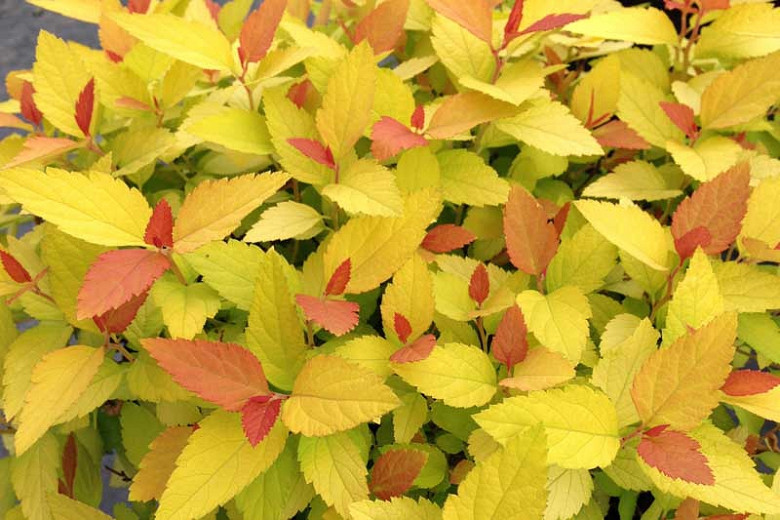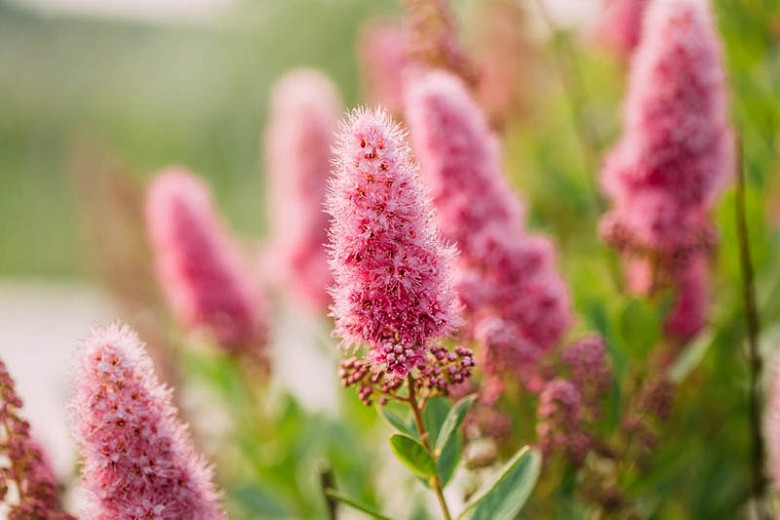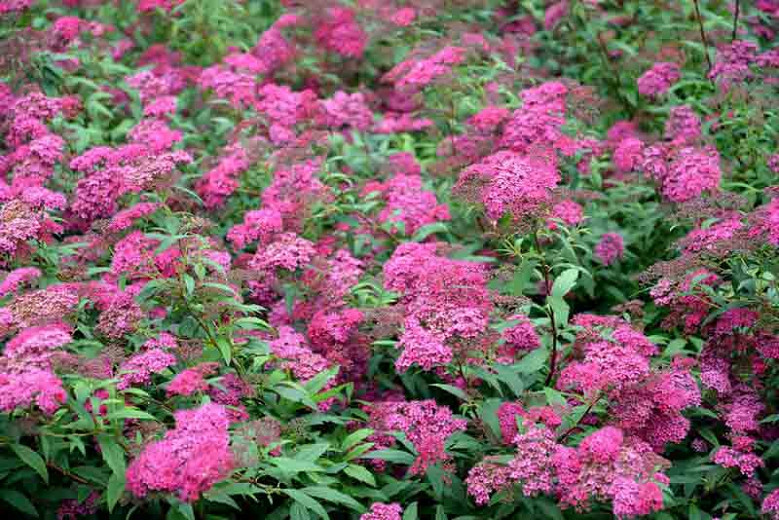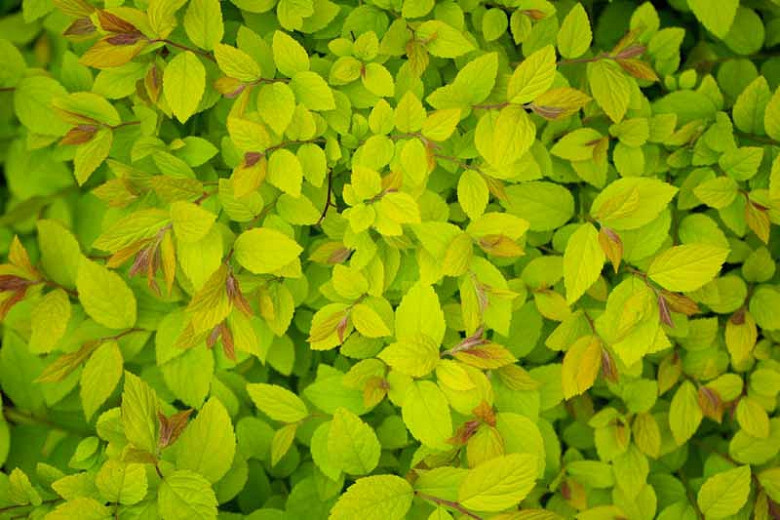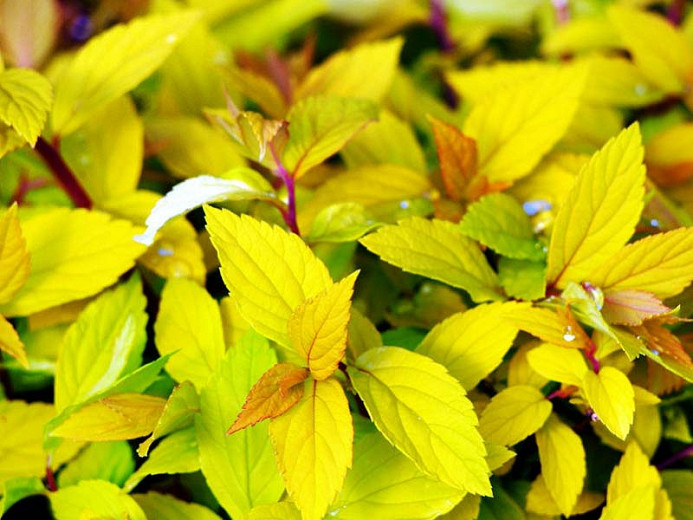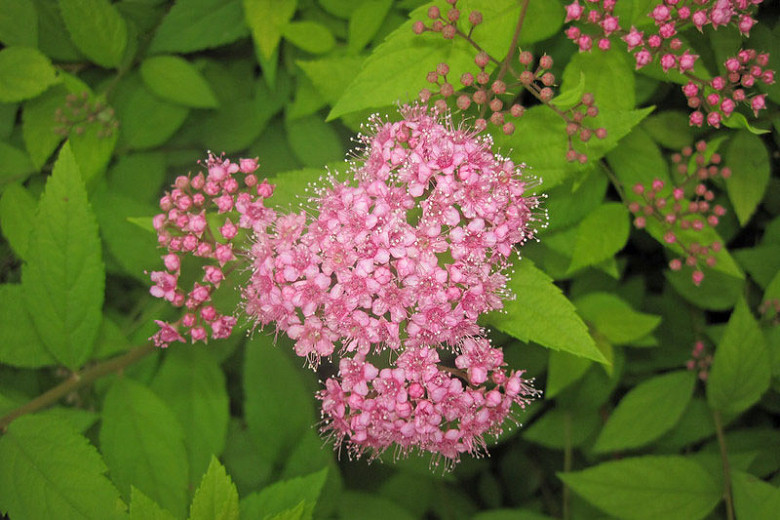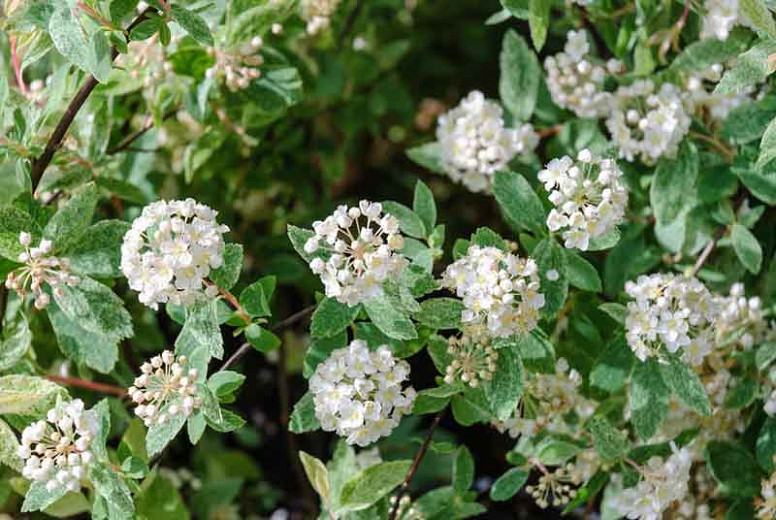Spiraea alba (White Meadowsweet)
Spiraea alba (White Meadowsweet) is a woody deciduous shrub bearing erect, unbranched stems clad with narrow, sharply serrated, medium green leaves. The foliage turns golden-yellow in fall. In early summer to early fall, dense pyramidal clusters, 3-4 in. long (7-10 cm), packed with tiny white or pale pinkish flowers, appear at the tips of the branches. Blooming for about 1-2 months, the flowers produce nectar and pollen, which attract bees, bumblebees, moths, and other pollinating insects. The blossoms are followed by fruits that contain 5 pods-shaped follicles, which burst open in the fall, thus allowing the seeds to disperse. Birds feast on them during the fall and winter. White Meadowsweet is typically found in the wild in wet prairies and along the edges of streams, marshes, or bogs, White Meadowsweet is most suitable for naturalistic landscaping. It also does well in cottage gardens where it can grow in full sun yet have its feet wet or moist.
- Grows up to 3-4 ft. tall and wide (90-120 cm).
- A full sun lover, this plant is easily grown in average, acidic, medium to wet soils. Tolerates part shade. Standing water can be tolerated if temporary.
- Perfect choice for beds and borders, cottage gardens, along ponds and streams, water gardens, or bog gardens.
- Attracts birds and butterflies but is ignored by deer.
- No serious pest and disease problems. Keep an eye out for leaf spots, fireblight, powdery mildew, rots, aphids, leaf roller, and scale.
- Remove spent flower clusters to promote additional bloom.
- Winter pruning could improve its form and encourage use in more formal gardens.
- Propagate with hardwood cuttings.
- A native of the eastern and midwestern United States.
Requirements
| Hardiness | 3 – 7 |
|---|---|
| Plant Type | Shrubs |
| Plant Family | Spiraea – Spirea |
| Exposure | Full Sun |
| Season of Interest | Summer (Early,Mid,Late)Fall |
| Height | 3' – 4' (90cm – 120cm) |
| Spread | 3' – 4' (90cm – 120cm) |
| Spacing | 36″ – 48″ (90cm – 120cm) |
| Water Needs | Average, High |
| Maintenance | Low |
| Soil Type | Clay, Loam, Sand |
| Soil pH | Acid, Neutral |
| Soil Drainage | Moist but Well-Drained, Moisture Retentive, Poorly Drained, Well-Drained |
| Characteristics | Showy |
| Native Plants | United States, Midwest, Illinois, Indiana, Iowa, Michigan, Minnesota, Missouri, North Dakota, Ohio, South Dakota, Wisconsin, Northeast, Connecticut, Delaware, Maine, Massachusetts, Maryland, New Hampshire, New Jersey, New York, Pennsylvania, Rhode Island, Vermont, Southeast, Kentucky, North Carolina, Tennessee, Virginia, West Virginia |
| Tolerance | Deer, Wet Soil |
| Attracts | Bees, Birds, Butterflies |
| Garden Uses | Beds and Borders, Bog Gardens, Ponds and Streams, Rain Gardens |
| Garden Styles | Informal and Cottage, Prairie and Meadow |

